Editorial "Apress"
Se han encontrado 45 Coincidencias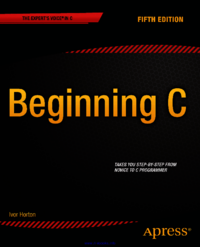
Beginning C
Apress
111 Visitas | 107 Descargas | 2017-10-11 18:00:42 | ediaz
Welcome to Beginning C: Fifth Edition. With this book you can become a competent C programmer using the latest version of the C language. In many ways, C is an ideal language with which to learn programming. It’s very compact, so there isn’t a lot of syntax to learn before you can write real applications. In spite of its conciseness, it’s extremely powerful and is used by professionals in many different areas. The power of C is such that it can be applied at all levels, from developing device drivers and operating system components to creating large-scale applications. A relatively new area for C is in application development for mobile phones. C compilers are available for virtually every kind of computer, so when you’ve learned C, you’ll be equipped to program in just about any context. Once you know C, you have an excellent base from which you can build an understanding of the object-oriented C++. My objective in this book is to minimize what I think are the three main hurdles the aspiring programmer must face: coming to grips with the jargon that pervades every programming language, understanding how to use the language elements (as opposed to merely knowing what they are), and appreciating how the language is applied in a practical context.
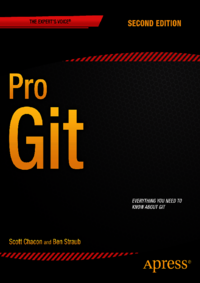
Pro Git
Version Control
29 Visitas | 31 Descargas | 2018-03-20 13:33:33 | osmanir
What is version control, and why should you care? Version control is a system that records changes to a file or set of files over time so that you can recall specific versions later. For the examples in this book, you will use software source code as the files being version controlled, though in reality you can do this with nearly any type of file on a computer.
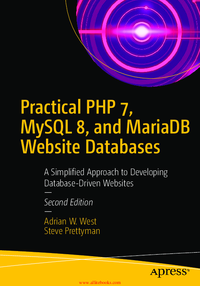
Practical PHP 7,MySQL 8, and MariaDB Website Databases
A Simplified Approach to Developing Database-Driven Websites
38 Visitas | 44 Descargas | 2018-12-11 15:18:31 | ylvb
The code and instructions in the first edition of this book (written in 2012) were made obsolete by new and very different versions of XAMPP, EasyPHP, phpMyAdmin, PHP, and MySQL/MariaDB. This second edition contains new code and instructions to match the latest versions of the software.With the massive increase in cybercrime and other cyber threats, this new edition has been fortified with a much stronger emphasis on security. This book takes the approach of sanitizing any data that has been accepted from any outside source and, additionally, sanitizing any data before it is displayed on a web page. Most of the examples use prepared statements that ensure that any externally accepted data cannot be executed and therefore cannot cause security vulnerabilities.We have chosen Bootstrap to provide responsive web design (RWD) for each of the book’s example websites. While Bootstrap provides the CSS and JavaScript to format the examples in this book for any size device, you can easily reformat these examples with your own CSS code if you desire.This new edition also takes a brief look at Oracle’s MySQL 8. A comparison is provided of the tools available in each version. Step-by-step procedures provide you with the ability to upgrade to MySQL 8.
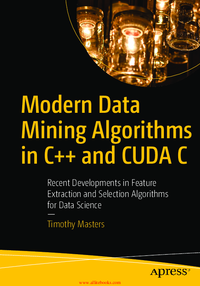
Modern Data Mining Algorithms in Cpp and CUDA C
Discover a variety of data-mining algorithms that are useful for selecting small sets of important features from among unwieldy masses of candidates, or extracting useful features from measured variables.
14 Visitas | 14 Descargas | 2020-10-04 12:14:01 | moliver
As a serious data miner you will often be faced with thousands of candidate features for your prediction or classification application, with most of the features being of little or no value. You’ll know that many of these features may be useful only in combination with certain other features while being practically worthless alone or in combination with most others. Some features may have enormous predictive power, but only within a small, specialized area of the feature space. The problems that plague modern data miners are endless. This book helps you solve this problem by presenting modern feature selection techniques and the code to implement them.
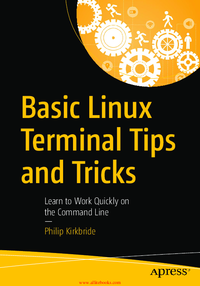
Basic Linux Terminal Tips and Tricks
Learn command line tricks, programs, and hacks you can use day to day as a Linux user, programmer, and system administrator. When you interact with the digital world, you can’t go far without interacting with Linux systems. This book shows you how to leverage its power to serve your needs.
27 Visitas | 24 Descargas | 2020-10-04 12:41:25 | moliver
Many users know "top" is installed on almost all Linux machines, but did you know with a few keystrokes you can customize it specifically for your needs? Stuck using `cd` and `ls` commands for navigating file systems? This book looks at how you can use Ranger to quickly navigate through multiple levels of folders, and quickly run bash commands without ever leaving the terminal. We also suggest programs that can be used for common tasks such as finding which programs are using the most processing, data download/upload, and file space. You’ll know how to quickly connect to remote machines and run your commonly needed jobs in a keystroke or even on auto-pilot. With Basic Linux Terminal Tips and Tricks you'll be equipped with a wide range of tools that can be used for daily work and maintenance on all sorts of Linux systems including servers, desktops, and even embedded devices.
Contribuir
Usted puede contribuir con Libros UCLV, es importante para nosotros su aporte..
Contribuir